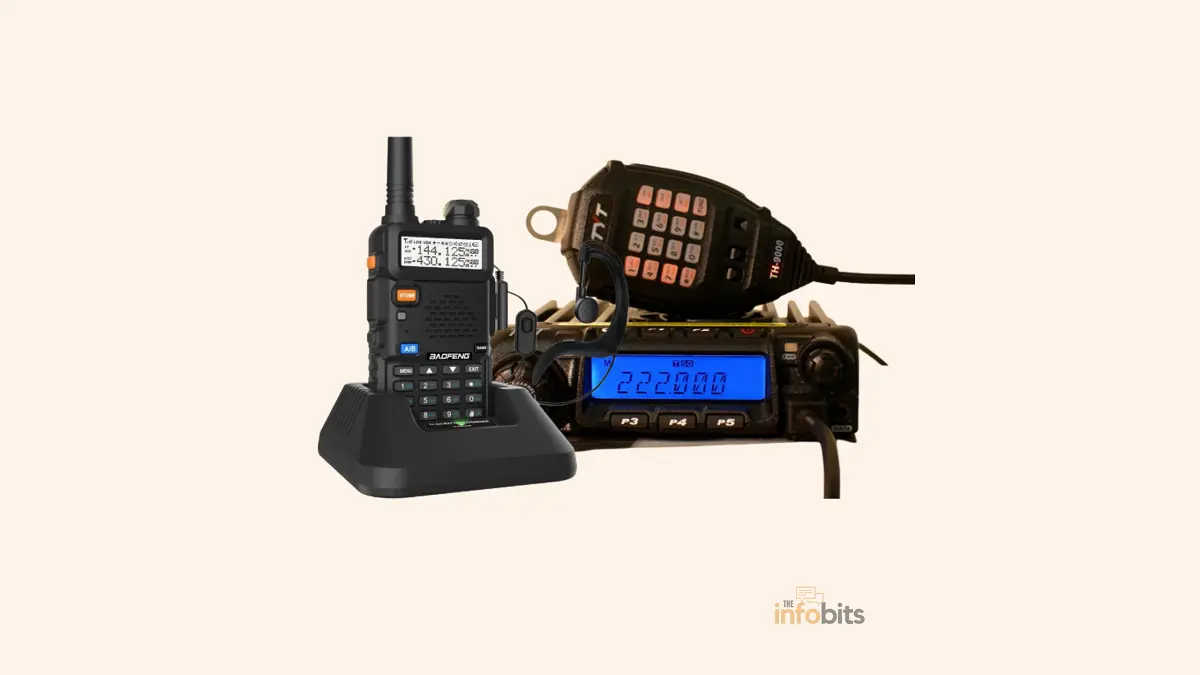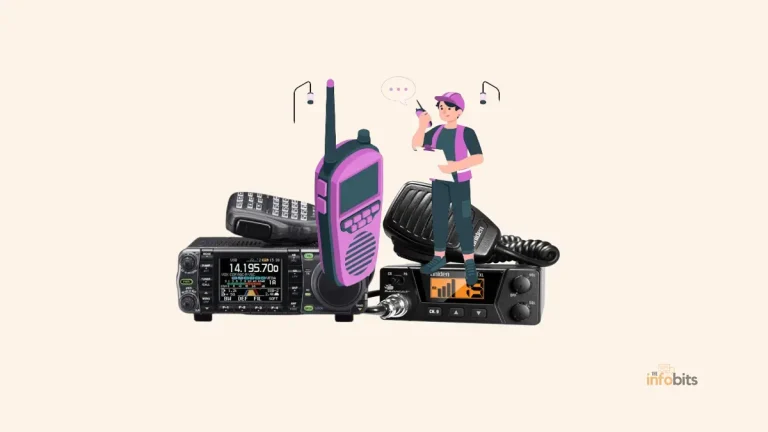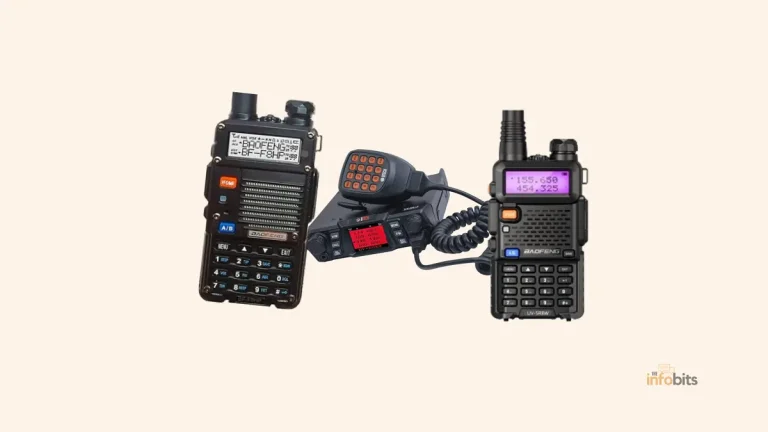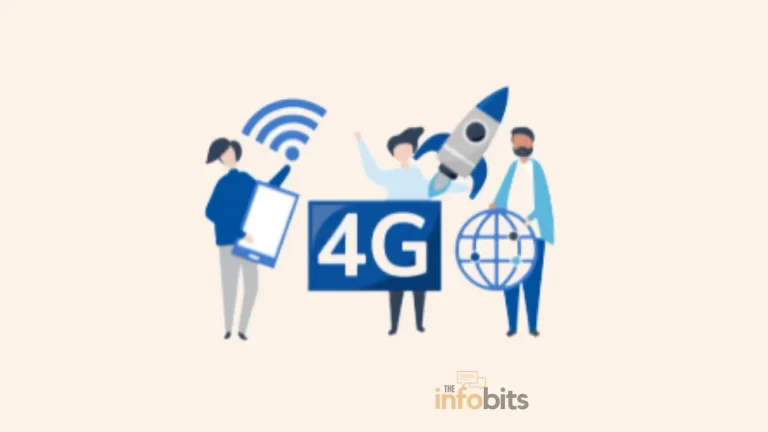What Is Ham Radio Used for and What Is the Importance of Ham Radio?
Amateur radio, generally known as Ham radio, is a classic geek hobby. It primarily involves radio operators known as “Hams” conversing on VHF and UHF channels.
In this day and age, some people have a negative perception of the amateur radio community.
What is Ham radio used for?
There are, however, some important practical advantages to being a “Ham.” Here are some of the reasons why you should get started.
Becoming a “Ham” has various practical advantages as well as the potential for a lot of fun. Here are some reasons why you might consider becoming a Ham radio operator.
What Exactly Is Ham Radio?
As previously stated in this article, Ham radio is a popular hobby and service that brings people, technology, and communication together. People use Ham radio to connect across town, over the world, and even into space in the absence of the Internet or cell phones.
Ham radio, often known as amateur radio, is a hobby in which radio operators utilize the radio frequency spectrum to communicate with one another via many modes, including voice, text, and digital data.
Radios are used by ham radio operators to connect with other ham radio operators, frequently over large distances, and they can even communicate with satellites and even the International Space Station.
When other modes of communication are unavailable, ham radio is frequently used for emergency communication, and many ham radio operators are educated in emergency communication procedures.
National and international agencies govern amateur radio and require a license to operate.
It’s fun, entertaining, educational, and may even save your life on occasion. Although Amateur Radio operators communicate for a variety of reasons, they all have a fundamental knowledge of radio technology and operational principles.
Amateur radio operators include doctors, students, children, politicians, truck drivers, movie stars, missionaries, and even your next-door neighbor. They are diverse in terms of age, gender, socioeconomic background, and country.
To connect with the rest of the world, all Hams use radio, whether it’s Morse code on an old brass telegraph key, voice transmission on a hand-held radio, or more modern electronic communications through satellite.
When New York City’s command center was destroyed during the 9/11 terrorist attacks, the Amateur Radio Service, kept agencies in touch. During Hurricane Katrina, when all other sources of communication failed, amateur radio came to the rescue.
You may communicate with other Hams using your voice and a microphone, or you can link the radio to your computer or tablet to send data, text, or images, or you can use Morse code, which is still widely used.
You can even connect with astronauts on the International Space Station, and other Hams in one of the many space satellites, or bounce signals off the moon and back to Earth!
The vast majority of amateur radio operators indulge in electronics and devote time to homebrewing. They are particularly interested in do-it-yourself projects.
Amateur Radio’s digital communications capabilities are very popular among computer-interested Hams. Other HAM activities include “DX competitions,” in which the objective is to contact as many Hams as possible in remote locations.
Ham radio is an early kind of social networking that is largely used to create connections over the air. There are roughly 750,000 radio amateurs in the United States, with over 3,000,000 worldwide.
Are Ham Radios Still Relevant?
Of course, there is a sizable fan base, especially in this online age. Despite the opinion that smartphones have rendered Ham radios obsolete, they continue to serve an important role in society.
What is the importance of Ham radio?
They are used to educate critical skills while also serving as dependable communication devices in emergency and disaster situations.
Ham radios are still used by hobbyists who are interested in radio communication. They love this enjoyable and educational way of interacting recreationally.
More communication distances are covered by radio waves reflected off the earth, atmosphere, and even the moon. Users of Ham radio may communicate across a wide variety of frequencies, making it ideal for long-distance conversations.
When cell phone towers or AM/FM radio stations are unable to transmit the signal, Ham radio is a great choice for emergency communications.
Radiocommunications include 3G, 4G, 5G, LTE, Bluetooth, and Wi-Fi, according to the National Association for Amateur Radio (ARRL). Amateur radio skills are still important as technology relies on these sorts of radio operations.
Amateur radio operators can participate in groups, leagues, and clubs. As a result, they have constant interaction with active Ham.
What Can You Do with Ham Radio?
In their leisure time, amateur radio operators operate their radio stations, engage in two-way contact, and exchange cultural, personal, and technical information with other amateurs not just in the United States, but throughout the world.
Their mode of operation might be spoken, Morse Code, or digital. Satellites are also used by certain Hams.
A Ham radio operator can do the following activities.
- Hams can communicate with any other Ham in the globe using an HF radio due to its vast range of connectivity.
- Using VHF/UHF transceivers, one may make local contact with other Hams in your area.
- Unlike current social media networks, Ham Radio is an ancient social media network that allows you to create a large number of genuine friends all over the world.
- Making communication with handmade low-power transceivers (which are commonly known as QRPs)is a simple but exciting task.
- A Ham radio operator may use Modern Amateur Radio Technology to exchange video, text, and emails, as well as make it easier to connect to the Internet.
Benefits of Ham Radio
What is Ham radio used for?
Let us go over the requirements and benefits of becoming a Ham radio operator.
1. Can Be Alert to Local Disasters and Accidents
Knowing about a local emergency, such as a multi-car pileup, could result in you being stuck in traffic for hours. Unfortunately, finding them in time may prove challenging.
Television news may not cover all of these situations or may report them slowly, and social media may be a jungle of lies and misinformation. Ham radio, on the other hand, is unique. It’s swift and dependable, and it comes from a reliable local source, often a first-hand witness.
People who live nearby or are watching incidents unfold from the comfort of their vehicles will tell you about them. As a result, many Ham radio operators utilize in-car Ham radio handsets.
This is news you can usually trust since it comes from people in your area or neighbors you know.
However, this is only one side of the tale. Many government agencies use amateur radio equipment’s UHF and VHF channels to notify the public of disasters and severe weather.
A similar one is the National Weather Service, which sends out automated weather notifications.
2. Very Useful in Natural Calamities or Other Disaster Conditions
Hurricane Sandy devastated the United States East Coast, bringing unimaginable destruction. Homes were without electricity for weeks, and communications were severely impeded.
Some people who placed themselves into trouble were unable to obtain assistance from local emergency services.
One thing the hurricane did not manage to disrupt was radio transmissions. As a result, amateur radio operators were instrumental in keeping people connected and safe during the storm.
Connecticut Ham radio operators worked around the clock to protect their towns and communicate with emergency services, shelters, and the local Red Cross. Many individuals fled their homes and gathered in these spots to maintain communication.
Any licensed amateur radio operator can join groups whose aim is to help in an emergency. One of the largest of this type of group is the Amateur Radio Emergency Service, which operates in both Canada and the United States. It is not the only one, and this form of Ham radio group may be found all over the world.
3. Ham Radio Is a Legal and Skilled Hobby
You cannot simply purchase a radio and declare yourself a radio amateur. Before you may start transmitting over the radio, you first need to get certified and licensed.
If you pass the qualifying examination, the FCC will award you a license to operate on the “Amateur Bands.”These bands have been approved for use by amateur radio operators by the Federal Communications Commission (FCC).
Licenses have been necessary since the government began regulating amateur radio activities in 1914. The FCC’s guidelines apply to both children and adults who are eligible for a license.
You’ll need to enroll in classes or do some self-study to prepare for the exam. Exam subjects include essentials such as amateur radio broadcasting regulations and county rules. You should also be familiar with the fundamentals of radio transmission methods and basic electronics.
4. The Ham Radio Community is a Global
Anyone who enjoys communicating with others will enjoy amateur radio. It will introduce you to new people and will be useful when you need it.
Thanks to this engaging, community-based activity, you’ll never be caught off guard the next time something major happens in your city.
You’ll always be the first to hear about events. Amateur radio is a tremendously social hobby.
We are not simply communicating with people over the radio, although this is an important aspect of being a Ham. You may engage in radio meet-up groups and social events in your area, as well as active online communities.
The Amateur Radio subreddit, for example, has over 95,000 users. It’s full of people speaking about their accomplishments and sharing their expertise.
Many social media groups are hellholes of internal conflict and politics, but the Ham community is different. They welcome newcomers and are usually eager to help, according to The Ham’s Code:
5. It’s Not as Expensive as You Think
You are not put off by the potential costs of becoming a “Ham.” In recent years, it has become a much more affordable hobby.
Basic study materials for passing the FCC exam and acquiring your first license are often less than $40. Many local groups also provide classes for people who want to get more involved.
Most Hams find it simplest, to begin with, with minimal equipment, and gradually grow after obtaining their first license. This is due in part to the influx of low-cost Ham radio transceivers on the market.
Baofeng is a Chinese maker of amateur radio handsets. They’ve done for Ham Radio what Huawei and Xiaomi did for smartphones: they’ve reduced the cost so that it’s affordable to everyone.
As a result, a working hand-held radio can currently be purchased for around $70. It’s a great starter radio for those new to the hobby.
There are more expensive options, of course, but the beauty of Ham radio is that all you need is airway access and a license. Everything else is entirely up to you.
Furthermore, modest equipment enhancements will not break the bank. A considerably more advanced radio may be purchased for roughly $200, and various Ham radio flea markets around the country sell nice used equipment for much less.
Getting your first radio and communicating with other Hams usually costs less than $200 in any way.
Ham Radio License Types
To earn your Ham radio license you must pass one of three written exams:
Exams are routinely provided by local volunteer examiners, many of whom are Ham radio enthusiasts. The cost might range from nothing to a little fee of no more than $15.
If you love finding out how things work and mastering math and science in school, becoming an amateur radio operator might be ideal.
a) Technician
This is the most basic level of amateur radio certification, with 35 very simple questions.
The Technician class license is the most common choice for beginning Ham radio operations. You must pass the test comprising 35 questions on radio theory, rules, and operating procedures to get the Technician license.
The license allows licensees to converse locally on any Amateur Radio frequencies above 30 MHz.
It also gives the HF (commonly known as “short wave”) bands, which are utilized for international communications, certain restricted rights.
Because learning Morse code is no longer necessary to become a licensed Ham radio operator, the process is straightforward.
When you obtain a Technician license, you are authorized to operate on the 2-meter band, which is one of the most popular Ham bands for local communications.
More than half of all amateur radio operators in the United States hold a Technician license.
b) General
The general grade examination has 35 questions in total, however, they are quite difficult.
This license offers access to global communications and allows for restricted operation on all Amateur Radio frequencies and modes. General licensees must also have passed the Technician written examination.
To move to a General license, which gives wide HF rights, a written examination is all that is necessary. You will then have access to all operating modes as well as the vast majority of amateur spectrum below 30 MHz.
c) Amateur Extra
This license is more difficult to get, requiring the completion of a lengthy 50-question test. The Amateur Extra class license allows you to operate on all authorized Amateur Radio bands and modes in the United States.
Extra class licensees are also required to have passed all preceding licensing class written tests. Licensees possessing a Technician or General license who pass a 50-question multiple-choice test can advance to Extra Class.
There is no Morse code exam necessary in this category either. In addition to some of the more complex laws, the Extra class test includes specific operating techniques, advanced electronics theory, and radio equipment design.
Why Do You Need a Ham Radio License?
The FCC created this mechanism to address the desire for a pool of specialists who could provide backup in an emergency. When necessary, they should be able to cooperate and collaborate with government entities.
Furthermore, the FCC acknowledged the hobby’s ability to improve radio communication and technical talents while also increasing global goodwill.
Talented amateurs have saved countless lives by serving as emergency communicators and providing help after earthquakes in Italy and hurricanes in the United States.
Different Ways of Ham Radio Communication
Radio amateurs can communicate in a variety of ways. The use of voice is one example and Morse code is still in use.
Packet, Radio Teletype (also known as Ritty), and PSK are three alternative means of communication.
Even faster transmissions are being developed using technology that can transmit practically any sort of digital data. Hams may also use television to broadcast pictures over the air.
Frequently Asked Questions
What can ham radio be used for?
Ham radio can be used for several reasons, including communicating with other operators and communicating in an emergency when other methods of communication fail. as a social and educational activity, to give communication assistance for public events, and to experiment with new techniques and technology.
What is the difference between a radio and a ham radio?
Radio is the use of radio waves to deliver and receive information. The radio may be used for a variety of purposes, including communication, entertainment, and broadcasting.
Ham radio, on the other hand, is a type of radio communication carried out by amateur radio operators, also known as hams.
What does ham radio stand for?
The term “ham” in ham radio has several probable origins.
One probable derivation is that it is an abbreviation for “amateur,” the official term for this sort of radio transmission.
Another possibility is that it is an abbreviation for “Help All Mankind,” emphasizing the hobby’s public service role.
Another explanation is that the name “ham” was initially a disparaging phrase used by professional telegraphers to refer to amateur operators, but was later embraced as a badge of honor by the amateur radio community.
Despite these different possibilities, the precise origin of the name “ham” in ham radio remains unknown.
Why is ham radio important?
Ham radio may be used for a variety of purposes, including speaking with other operators and communicating in an emergency when traditional communication systems fail.
What are the advantages of digital ham radio?
A normal analog radio’s signal decreases as it nears its maximum range. A digital radio, on the other hand, will maintain considerably more constant signal and sound quality regardless of distance to or from the maximum range.
We hope you found this article helpful, and do like and follow us on Facebook and Twitter for regular updates. In addition, we ask that you bookmark this page for future reference.
Sign up for our free newsletter as well to receive fresh information right in your inbox and stay informed technically.






